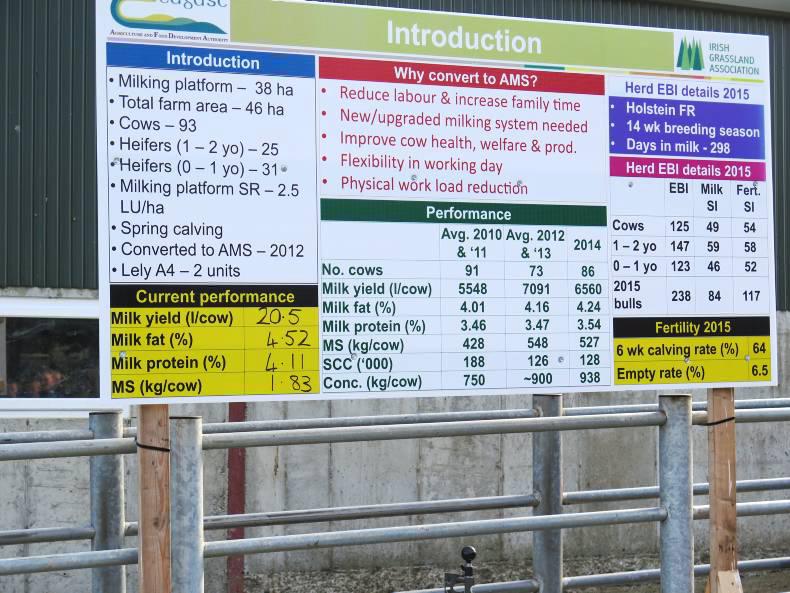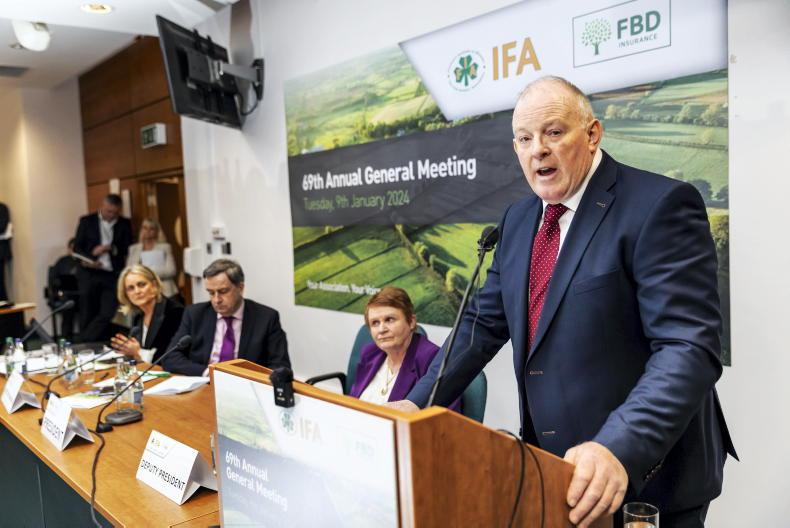The study is looking at milking frequencies and cow breeds to optimise the use of automatic milking in grass-based systems. The trial is ongoing and no clear pattern was evident in the results shown.
However, John Shortall presented very interesting results from on-farm recording of robotic milking systems on commercial farms and also the results from a modelling exercise on the profitability of robotic milking over conventional milking.
Using electricity meters on commercial farms, he is recording data that shows that robotic systems use 68% more electricity per litre of milk produced than conventional systems. The main culprits here are water heating and the air compressor. Twenty five percent of total electricity usage is attributed to the air compressor, which operates the drafting gates etc.
Modelling exercise
In a modelling exercise on the costs involved in running robotic systems, he compared the costs for a farmer with 140 cows but no milking facilities, but everything else equal. He compared purchasing two robots for €239,000, installing a medium-spec 20-unit herringbone with ACRs for €130,000 and installing a high-tech 20-unit herringbone, with the same technology as on the robot for €195,000. All costs include the plant and building/steelwork/sheds.
Using the standard Moorepark blueprint of 400kg MS per cow, 400kg of meal per cow and stocking rate of 2.8 cows/ha, he ran the model to see what effect each system would have on profitability. All investments were to be financed over 10 years at 5% interest. The main variables were repayments, running costs and, of course, labour. Labour was costed at €12.50 per hour.
His results showed that the most profitable system would be the medium-spec 20-unit herringbone, with both the robot and the high-spec 20-unit about €9,000 less profitable per year.
John said: “The main differences between the robot and the medium-spec parlour were lower repayments and cheaper running costs. The lower labour input with the robot did not make up for this. The running costs of the high-spec parlour are high – greater energy consumption and higher servicing costs than the medium-spec parlour but with the same labour input. When you factor in the increased repayments, there’s not much difference between the high-spec parlour and the robots, but a big difference between the robot and the medium-spec parlour.”
John also said that his labour study is showing that farmers with robots are spending 30 minutes more per day just putting up wires than farmers with conventional systems.
Comment
For me, it doesn’t really matter what or who milks your cows once it is done in a low-cost and sustainable way and doesn’t jeopardise the whole system. There are a million reasons one can use to put in a robot, but as John Shortall points out, increasing profitability is unlikely to be one of them.
The results were presented as part of a walk at Aidan Power’s farm in Co Tipperary this Wednesday, held in conjunction with the Irish Grassland Association. Read more about the host farmer's own experience with a robot.









SHARING OPTIONS